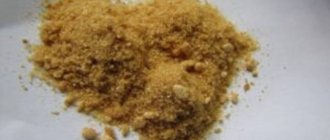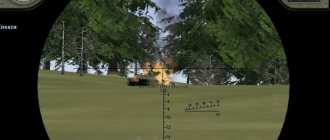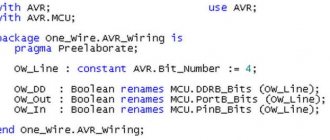Cell organelle
| Plastid | |
| Scientific classification | |
| Domain: | Bacteria |
| Type: | Cyanobacteria |
| Clade : | Plastids |
Plant cells with visible chloroplasts.
Plastid
(Greek: πλαστός; plastós: formed, molded - multiple
plastid
) is a membrane-bound organelle [1] found in cells of plants, algae and some other eukaryotic organisms. They are considered intracellular endosymbiotic cyanobacteria. Examples include chloroplasts (used for photosynthesis), chromoplasts (used to synthesize and store pigments), and leucoplasts (unpigmented plastids that can sometimes differentiate).
A permanent endosymbiosis event in the clade Archaeplastida (land plants, red and green algae) likely occurred with a cyanobiont (symbiotic cyanobacteria) belonging to the genus Gloeomargarita
, approximately 1.5 billion years ago.
[2] [3] A later primary endosymbiont event occurred in the photosynthetic Paulinella
amoeboid about 90–140 million years ago, with the plastid being sister to the "PS-clyde" (of the cyanobacteria genera
Prochlorococcus
and
Synechococcus
). [4] Secondary and tertiary endosymbiosis has also occurred in a wide variety of organisms; Additionally, some organisms sequester ingested plastids in a process known as kleptoplasty.
Plastids were discovered and named by Ernst Haeckel, but AFW Schimper was the first to give a clear definition. They often contain pigments used in photosynthesis, and the types of pigments in the plastid determine the color of the cell. They are also the site of production and storage of important chemical compounds used by autotrophic eukaryotic cells. They possess a double-stranded DNA molecule that is circular, like the circular chromosome of prokaryotic cells.
At land-based factories[edit]
Types of plastids
Leucoplasts in plant cells.
In land plants, plastids containing chlorophyll can carry out photosynthesis and are called chloroplasts. Plastids can also store products such as starch and can synthesize fatty acids and terpenes, which can be used for energy production and as raw materials for the synthesis of other molecules. For example, the components of the plant cuticle and its epicuticular wax are synthesized by epidermal cells from palmitic acid, which is synthesized in the chloroplasts of mesophyll tissue. [5]All plastids are derived from proplastids, which are present in the meristematic regions of the plant. Proplastids and young chloroplasts usually divide by binary fission, but more mature chloroplasts also have this ability.
Proplastids
plants (undifferentiated plastids) can differentiate into several forms depending on the function they perform in the cell. They can develop into any of the following: [6]
- Chloroplasts: usually green plastids used for photosynthesis. Etioplasts are the precursors of chloroplasts.
- Amyloplasts: for storing starch and sensing gravity (for geotropism)
Depending on their morphology and function, plastids have the ability to differentiate or redifferentiate between these and other forms.
Each plastid creates multiple copies of the circular 10–250 kilobase plastome. [7] [8] The number of genome copies per plastid varies, from over 1000 in rapidly dividing cells, which typically contain few plastids, to 100 or less in mature cells, where plastid divisions have resulted in a large number of plastids. The plastome contains about 100 genes encoding ribosomal and transfer ribonucleic acids (rRNA and tRNA), as well as proteins involved in photosynthesis and the transcription and translation of plastid genes. However, these proteins represent only a small part of the overall protein structure required to create and maintain structures and functions of a particular type of plastid. Plant nuclear genes encode the vast majority of plastid proteins, and the expression of plastid genes and nuclear genes is tightly co-regulated to coordinate proper plastid development with respect to cell differentiation.
Plastid DNA exists as large protein-DNA complexes associated with the inner membrane envelope and called "plastid nucleoids". Each nucleoid particle can contain more than 10 copies of plastid DNA. The proplastid contains a single nucleoid located in the center of the plastid. The developing plastid has many nucleoids localized at the periphery of the plastid, associated with the inner membrane shell. During the development of proplastids into chloroplasts and as plastids change from one type to another, the nucleoids change in morphology, size, and location within the organelle. Nucleoid remodeling is believed to occur through modification of the composition and quantity of nucleoid proteins.
Many plastids, especially those responsible for photosynthesis, have numerous internal membrane layers.
Plant cells sometimes develop long, thin projections called stromules that extend from the main plastid body into the cytosol and connect several plastids together. Proteins and presumably smaller molecules can move within the stromules. Most cultured cells, which are relatively large compared to other plant cells, have very long and numerous stromules that extend to the periphery of the cell.
In 2014, evidence of possible plastid genome loss was found in Rafflesia lagascae
, a non-photosynthetic parasitic flowering plant, and in
Polytomella
, a genus of non-photosynthetic green algae.
Extensive searches for plastid genes in both Rafflesia
and
Polytomella have yielded no
results, but the conclusion that their plastomes are completely absent is still controversial. [9] Some scientists argue that loss of the plastid genome is unlikely, since even non-photosynthetic plastids contain genes needed to complete various biosynthetic pathways, such as heme biosynthesis. [9] [10]
Usage
Why is plastic explosive needed if its power is inferior (or equal) to TNT and hexogen, and its cost significantly exceeds them?
The fact is that the brisance (crushing effect) of small explosive charges quickly decreases with distance from the point of detonation. Roughly speaking, if ten grams of explosives explode in your clenched fist, you are guaranteed to lose your fingers. If a similar amount of explosives detonates twenty centimeters from your hand, then the damage will be minimal. The conclusion from this is simple: to cause maximum damage to an object, explosives must be as close to it as possible.
In this regard, PVV is ideal; a charge of plastic explosive can be placed not just close to the object being destroyed, but attached to it. A metal beam or channel can be covered with PVV on all sides and this will not be interfered with by protrusions, bolts or rivets.
And attaching plastic explosives is much easier and faster than, for example, TNT bombs.
If you have any questions, leave them in the comments below the article. We or our visitors will be happy to answer them
And similar to plastic explosives. C-4 is part of a group designated "C", which also includes formulations C-2 and C-3, which contain varying amounts of RDX.
It is sometimes claimed [ ] that the designation "C" stands for "composition", and the name of the composition is an abbreviation for Composition 4
.
However, this is incorrect, the term composition
was used for any stable explosive composition, and there were "Composition A" and "Composition B" explosives.
Thus, the more logical name is Composition C-4
.
Encyclopedic YouTube
- 1 / 2
✪ Orica emulsion explosives at the quarry
✪ Lesson 8.1. Explosives
Subtitles
In algae and protozoa[edit]
Types of plastids in algae and protozoa include:
- Chloroplasts: Found in green algae and other organisms. Muroplasts: Also known as cyanoplasts or cyanelles, the chloroplasts of glaucophyte algae are similar to plant chloroplasts, except that they have a peptidoglycan cell wall, similar to that of prokaryotes.
- Rhodoplasts: red chloroplasts found in red algae, which allow them to photosynthesize at depths of up to 268 m. [6] Plant chloroplasts differ from rhodoplasts in their ability to synthesize starch, which is stored as granules in plastids. In red algae, floridan starch is synthesized and stored outside the plastid in the cytosol. [eleven]
- Secondary and tertiary chloroplasts: from endosymbiosis of green algae and red algae.
Plastid
The photosynthetic species
Paulinella
is often called a "cyanella" or chromatophore and is used in photosynthesis; [12][13] it had a much more recent endosymbiotic event around 90–140 million years ago and is the only other known primary endosymbiotic event of cyanobacteria. [14] [15]
Etioplasts, amyloplasts and chromoplasts are specific to plants and are not found in algae. [ citation needed
] Plastids of algae and hornworts may also differ from plant plastids in that they contain pyrenoids.
Additional Information
- During the Vietnam War, many American soldiers used small quantities of C-4 to heat rations on long raids. Although soldiers used this method quite safely, there were several stories of soldiers trying to extinguish C-4 by stomping on the flame and causing an explosion (burning explosives in a closed or semi-enclosed space increases pressure, accelerates combustion and leads to an explosion with a much greater more likely than burning in open space, but the Mythbusters (episode 175 of season 9) failed to detonate S-4 either with blows or with thermite).
- C-4 was used in the finals of the professional wrestling tournament "King of the Death match" in 1995 in Japan. Tournament winner Mick Foley suffered 2nd degree burns.
- Since the 1990s, the composition C-4 (and other plastic explosives) in Russian has often been called plastid
or
plastid C-4
. This name is especially often used to hide correct information about the composition and characteristics of explosive devices used for illegal actions (terrorist attacks). The term "Plastids" is used in biology to refer to the elements of a cell.
- C-4 is initially odorless. But so that dogs can detect it, special chemical markers are used. In most cases, C-4 smells like almonds.
Inheritance[edit]
Most plants inherit plastids from only one parent. In general, angiosperms inherit the plastids of the female gamete, while many gymnosperms inherit the plastids of the male pollen. Algae also inherit plastids from only one parent. Thus, the plastid DNA of the other parent is completely lost.
With normal intraspecific crosses (leading to the appearance of normal hybrids of the same species), the inheritance of plastid DNA is 100% homogeneous. However, with interspecific hybridization, plastid inheritance turns out to be more unstable. Although plastids are inherited primarily through the maternal line through interspecific hybridization, there are many reports of flowering plant hybrids containing paternal plastids. Approximately 20% of angiosperms, including alfalfa ( Medicago sativa
), usually demonstrate inheritance of plastids from two parents. [16]
Compound
When the reaction begins, C-4 breaks down, releasing various gases (mainly oxides of carbon and nitrogen). The initial expansion speed of gases is 8500 meters per second.
To an outside observer, the explosion occurs almost instantly. However, the explosion has two phases. The initial expansion causes most of the damage. It also creates an area of low pressure near the center - the gases move so fast that there are almost no gases left near the center. In the second phase, the gases move back into a region of partial vacuum, creating a second wave directed inward.
Two standard military units of C-4 (M-112), weighing half a kilogram each, are enough to blow up a truck. Explosives technicians typically use larger amounts of C-4. For example, to destroy a steel beam 20 centimeters thick, approximately 3.5-4.5 kilograms of C-4 are used.
DNA damage and repair[edit]
Plastid DNA from corn seedlings is subject to increased damage as the seedlings develop. [17] DNA is damaged in the oxidative environment created by photo-oxidative reactions and photosynthetic/respiratory electron transfer. Some DNA molecules are repaired, while DNA with unrepaired damage appears to break down into nonfunctional fragments.
DNA repair proteins are encoded by the cell's nuclear genome, but can be translocated to plastids where they maintain genome stability/integrity by repairing plastid DNA. [18] For example, in the chloroplasts of the moss Physcomitrella patens
a protein used for DNA mismatch repair (Msh1) interacts with proteins used in recombinational repair (RecA and RecG) to maintain plastid genome stability. [19]
Reproduction and types of organelles
Plastids reproduce by dividing developed organelles. In educational tissues, the division of organelles and cells is interconnected, so the number of plastids in mother and daughter cells is almost the same.
The process of reproduction itself is similar to the division of prokaryotic cells, that is, compression occurs in its central part, then a constriction is formed between new formations and then complete separation. Most often divided:
- proplastids;
- etioplasts;
- young chloroplasts.
Most flower species take on the characteristics of the mother plant during reproduction, as male cells are often degraded during gametophyte development or double fertilization. Some plants have shown signs of inheritance from both parents, and sometimes specimens with paternal characteristics are found. Plastids of land plants perform a number of functions:
- photosynthesis;
- reduction of inorganic ions;
- synthesis of main metabolites and regular molecules;
- accumulation of iron, lipids and starch.
Summary table of the main types of plastids:
| Properties | Chloroplasts | Chromoplasts | Leukoplasts |
| Structure | Double-membrane organelle with grana and channels | Organelle with an undeveloped intramembrane system | Organelles found in parts of plants hidden from light |
| Color | Greens | Multicolored | Colorless |
| Pigment | Chlorophyll | Carotenoid | Absent |
| Form | Oval | Polygonal | Globular |
| Functions | Photosynthesis | Accumulation of carotenoids | Nutrient Accumulation |
| Conversion | Transform into chromoplasts | Not converted | Become chroloplasts and chromoplasts |
Origin[edit]
Plastids are thought to be endosymbiotic cyanobacteria. The primary endosymbiotic event in Archaeplastida is thought to have occurred about 1.5 billion years ago [20] and allowed eukaryotes to carry out oxygenic photosynthesis. [21] Since then, three evolutionary lineages of Archaeplastida have emerged in which plastids are named differently: chloroplasts in green algae and plants, rhodoplasts in red algae, and muroplasts in glaucophytes. Plastids differ in both pigmentation and ultrastructure. For example, the chloroplasts of plants and green algae have lost all phycobilisomes, the light-harvesting complexes found in cyanobacteria, red algae, and glaucophytes, but instead contain stromal thylakoids and grana. The plastid of Glaucocystothecus - unlike the chloroplasts and rhodoplasts - is still surrounded by remnants of the cyanobacterial cell wall. All these primary plastids are surrounded by two membranes.
Plastid
photosynthetic species
Paulinella
is often referred to as the "cyanella" or chromatophore, and had a much more recent endosymbiotic event about 90–140 million years ago;
this is the only known primary endosymbiosis of cyanobacteria outside the Archaeplastida. [12][13] The plastid was sister to the "PS-clade" (cyanobacteria of the genera Prochlorococcus
and
Synechococcus
), which is another sister clade of plastids belonging to the Archaeplastida. [4]
Unlike primary plastids resulting from primary endosymbiosis of prokaryotic cyanobacteria, complex plastids resulted from secondary endosymbiosis in which a eukaryotic organism absorbed another eukaryotic organism containing a primary plastid. [22] When a eukaryote ingests a red or green alga and retains an algal plastid, the plastid is usually surrounded by more than two membranes. In some cases, these plastids may have their metabolic and/or photosynthetic capacity reduced. Algae with complex plastids formed by secondary red algae endosymbiosis include heterokonts, haptophytes, cryptomonads and most dinoflagellates (= rhodoplasts). Those that endosymbiose green algae include euglenids and chlorarachniophytes (= chloroplasts). Apicomplexa, a phylum of obligately parasitic protozoa, including the causative agent of malaria ( Plasmodium
spp.), toxoplasmosis (
toxoplasma
), and many other human or animal diseases also feed complex plastids (although this organelle has been lost in some apicomplexans, e.g.
Cryptosporidium parvum
, which causes cryptosporidiosis). 'Apicoplast' is no longer capable of photosynthesis, but is an important organelle and a promising target for the development of antiparasitic drugs.
Some dinoflagellates and sea slugs, particularly members of the genus Elysia
, ingest algae as food and retain the plastid of the digested algae to benefit from photosynthesis;
After some time, the plastids are also digested. This process is known as kleptoplasty, from the Greek kleptes
, thief.
Description of organelles
Plastids are formed from young germ cells called proplastids. They are round in shape and have two membranes that are filled with a homogeneous substance (matrix). The matrix contains:
- circular deoxyribonucleic acid;
- prokaryotic small ribosomes;
- organelle genome.
Proplastids enter the new organelle through the egg and they can divide to form all types of organelles. Each type of plastid differs from the other in shape, structure and size. Conventional organelles of higher plants are surrounded by outer and inner membranes, in which the number of galactolipids prevails over the number of phospholipids.
The outer membrane has a smooth shape and it never connects to the inner one. In the structure of plastids, its function is considered to be the transport of water, ions and metabolites. This process is carried out due to the presence of pore protein.
There are points of close interaction between the membranes, and biologists assume that in these places the transition of proteins from the cytoplasm occurs. The inner membrane is capable of allowing small uncharged molecules and monocarboxylic acids to pass through.
Large and charged metabolic products are transported by carrier proteins. Plastids develop through vesicles that detach from the inner membrane and become organized. The level of development depends on the types of organelles.
Links[edit]
- Jump up
↑ Sato N (2006).
"The origin and evolution of plastids: a genomic perspective on plastid association and diversity". In Wise RR, Hoober JK (eds.). Structure and function of plastids
.
Advances in photosynthesis and respiration. 23
. Springer Netherlands. pp. 75–102. DOI: 10.1007/978-1-4020-4061-0_4. ISBN 978-1-4020-4060-3. - Moore KR, Magnabosco C, Momper L, Gold DA, Bosak T, Fournier GP (2019). "Extended ribosomal phylogeny of cyanobacteria supports deep placement of plastids". Frontiers in Microbiology
.
10
: 1612 DOI: 10.3389/fmicb.2019.01612. PMC 6640209. PMID 31354692. - Vries, Jan de; Gould, Sven B. (01/15/2018). "The monoplastid bottleneck in the evolution of algae and plants". Journal of Cell Science
.
131
(2): jcs203414. DOI: 10.1242/jcs.203414. ISSN 0021-9533. PMID 28893840. - ^ a b Marin, Birger; Novak, Eva SM; Glöckner, Gernot; Melkonian, Michael (2021-02-01). "An ancestor of the Paulinella chromatophore acquired a carboxysomal operon by horizontal gene transfer from a Nitrococcus-like γ-proteobacterium". BMC Evolutionary Biology
.
7
. DOI: 10.1186/1471-2148-7-85. PMID 17550603. Retrieved February 1, 2022. - Kolattukudy, P.E. (1996) "Biosynthetic pathways of cutin and waxes, and their sensitivity to environmental stress", pp. 83-108 in:. Plant cuticles
. G. Kerstiens (editor), BIOS Scientific publishers Ltd., Oxford - ^ ab Wise, Robert R. (2006). "1. Diversity of forms and functions of plastids". Advances in photosynthesis and respiration
.
23
. Springer. pp. 3–26. DOI: 10.1007/978-1-4020-4061-0_1. ISBN 978-1-4020-4060-3. - Vic, S; Schneeweiss, G.M.; dePamphilis, C.W.; Mueller, K.F.; Quandt, D. (2011). "Evolution of plastid chromosomes in land plants: gene content, gene order, gene function". Molecular Biology of Plants
.
76
(3–5): 273–297. DOI: 10.1007/s11103-011-9762-4. PMID 21424877. - Vic, S; Naumann, J (2018). "Molecular evolution of plastid genomes of parasitic flowering plants". Advances in Botanical Research
.
85
: 315–347. DOI: 10.1016/bs.abr.2017.11.014. - ^ ab "Plants without plastid genomes". Scientist
. Retrieved September 26, 2015. - Barbrook AC, Howe CJ, Purton S (February 2006). "Why are plastid genomes conserved in non-photosynthetic organisms?" Trends in crop production
.
11
(2): 101–8. DOI: 10.1016/j.tplants.2005.12.004. PMID 16406301. - Viola R, Nyvall R, M Pedersen (July 2001). "Unique features of starch metabolism in red algae". Progress. Biological Sciences
.
268
(1474): 1417–22. DOI: 10.1098/rspb.2001.1644. PMC 1088757. PMID 11429143. - ^ a b "Evolutionary dynamics of the chromatophore genome in three photosynthetic Paulinella species - Scientific Reports". Nature
. 2019-02-22. Source 2021-01-29. - ^ a b Gabr, Arva; Grossman, Arthur R.; Bhattacharya, Debashish (05/05/2020). Palenik, B. (ed.). "Paulinella, a model for understanding primary plastid endosymbiosis". Journal of Psychology
.
Wiley. 56
(4):837–843. DOI: 10.1111/jpy.13003. ISSN 0022-3646. PMC 7734844. - ↑
Sanchez-Baracaldo, Patricia;
Raven, John A.; Pisani, Davide; Knoll, Andrew H. (September 12, 2022). "Early photosynthetic eukaryotes inhabited low-salinity habitats". Proceedings of the National Academy of Sciences
.
114
(37): E7737–E7745. DOI: 10.1073/pnas.1620089114. ISSN 0027-8424. PMC 5603991. PMID 28808007. - Louis Delay; Cecilio Valadez-Cano; Bernardo Perez-Zamorano (March 15, 2016). "How ancient is Paulinella Chromatophora?" . PLOS Currents
.
8
. DOI: 10.1371/CURRENTS.TOL.E68A099364BB1A1E129A17B4E06B0C6B. ISSN 2157-3999. PMC 4866557. PMID 28515968. Wikidata Q36374426. - Zhang Q (March 2010). "Why is biparental plastid inheritance reviving in angiosperms?" Journal of Plant Research
.
123
(2):201–6. doi:10.1007/s10265-009-0291-Z. PMID 20052516. S2CID 5108244. - Kumar RA, Oldenburg DJ, Bendich AJ (December 2014). "Changes in DNA damage, molecular integrity, and copy number of plastid DNA and mitochondrial DNA during maize development". Journal of Experimental Botany
.
65
(22):6425–39. DOI: 10.1093/JXB/eru359. PMC 4246179. PMID 25261192. - Oldenburg DJ, Bendich AJ (2015). "DNA maintenance in plant plastids and mitochondria". Frontiers in Plant Science
.
6
: 883. DOI: 10.3389/fpls.2015.00883. PMC 4624840. PMID 26579143. - Odahara M, Kishita Y, Y Sekine (August 2017). "MSH1 maintains genomic organelle stability and genetically interacts with RECA and RECG in the moss Physcomitrella patens". Factory magazine
.
91
(3):455–465. DOI: 10.1111/tpj.13573. PMID 28407383. - Ochoa de Alda JA, Esteban R, Diago ML, Houmard J (September 2014). "The plastid ancestor evolved from one of the main lineages of cyanobacteria". Nature Communications
.
5
: 4937. Bibcode: 2014NatCo...5.4937O. DOI: 10.1038/ncomms5937. PMID 25222494. - ↑
Hedges SB, Blair JE, Venturi ML, Shoe JL (January 2004).
"Molecular time scale of eukaryotic evolution and the emergence of complex multicellular life". BMC Evolutionary Biology
.
4
: 2. DOI: 10.1186/1471-2148-4-2. PMC 341452. PMID 15005799. - Chan CX, Bhattachary D (2010). "Origin of plastids". Nature Education
.
3
(9): 84. - Whatley, Jean M. (1978). "A proposed cycle of plastid developmental relationships". New phytologist
.
80
(3):489–502. DOI: 10.1111/j.1469-8137.1978.tb01581.x. ISSN 0028-646X. JSTOR 2431207.
Further reading[edit]
- Hanson MR, Kohler RH. "A New Look at the Structure of the Chloroplast". Plant Physiology Online
. Archived from the original on 2005-06-14. - Wycliffe P, Sitbon F, Wernersson J, Ezcurra I, Ellerström M, Rask L (October 2005). "Continuous expression in tobacco leaves of the Brassica napus homologue PEND blocks plastid differentiation and palisade cell development." Factory magazine
.
44
(1): 1–15. DOI: 10.1111/j.1365-313X.2005.02482.x. PMID 16167891. - Tags C.W. (2001). "Inheritance of genes in mitochondria and chloroplasts: laws, mechanisms and models" (PDF). Annual Review of Genetics
.
35
: 125–48. DOI: 10.1146/annurev.genet.35.102401.090231. PMID 11700280. Archived from the original (PDF) on June 22, 2010. Retrieved March 1, 2009. - Chan S. H., Bhattacharya D. (2010). "Origins of plastids". Nature Education
.
3
(9): 84. - Bhattacharya D., ed. (1997). Origin of algae and their plastids
. New York: Springer-Verlag/Wein. ISBN 978-3-211-83036-9. - Gould SB, Waller RF, McFadden GI. (2008). "Plastid evolution". Annual Review of Plant Biology
.
59
: 491–517. DOI: 10.1146/annurev.arplant.59.032607.092915. PMID 18315522. S2CID 30458113. - Keeling P.J. (March 2010). "Endosymbiotic origin, diversity and fate of plastids". Philosophical Transactions of the Royal Society of London.
Series B, Biological Sciences .
365
(1541):729–48. DOI: 10.1098/rstb.2009.0103. PMC 2817223. PMID 20124341.











